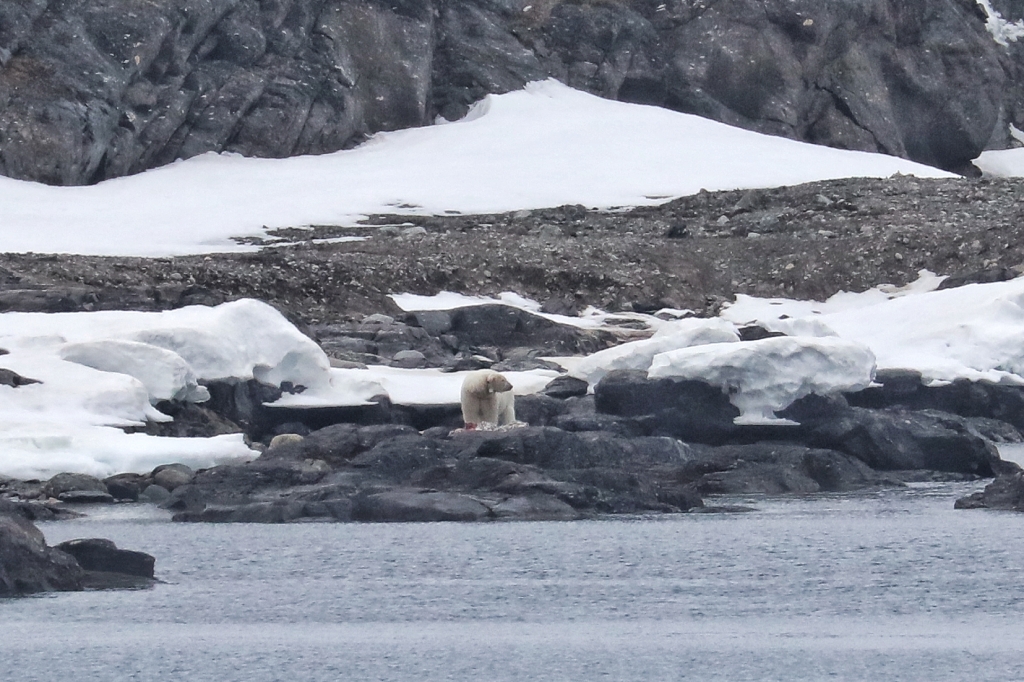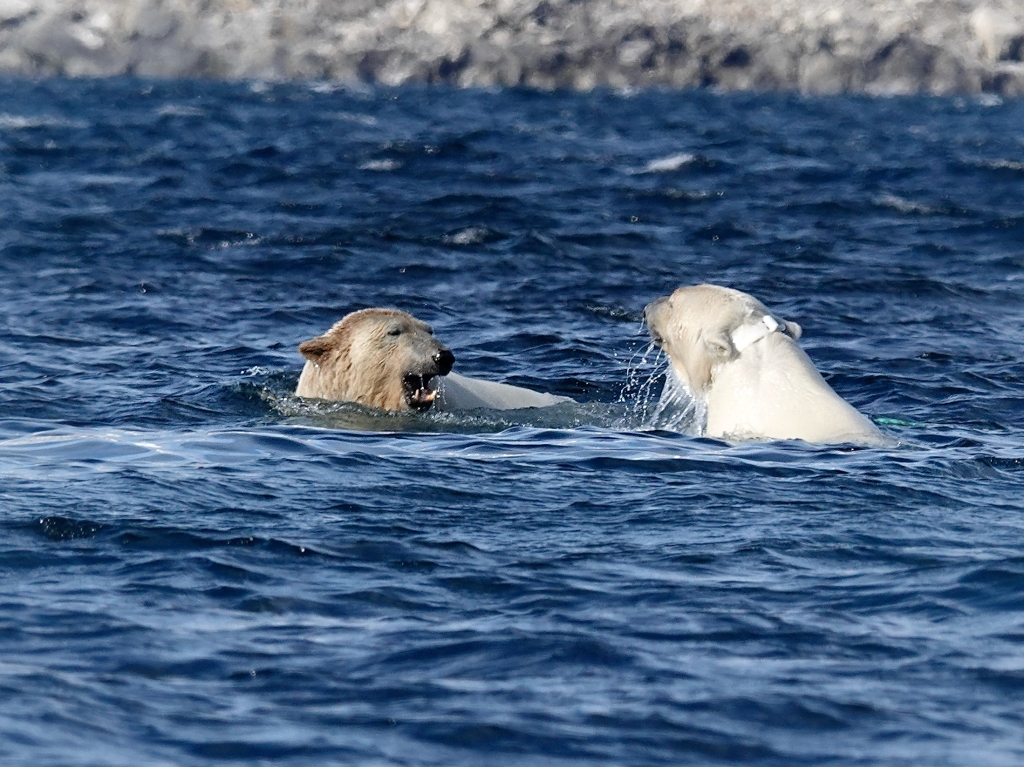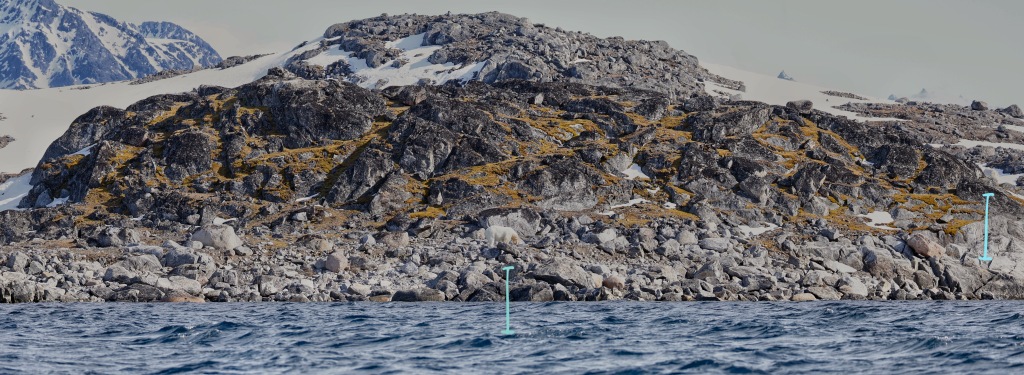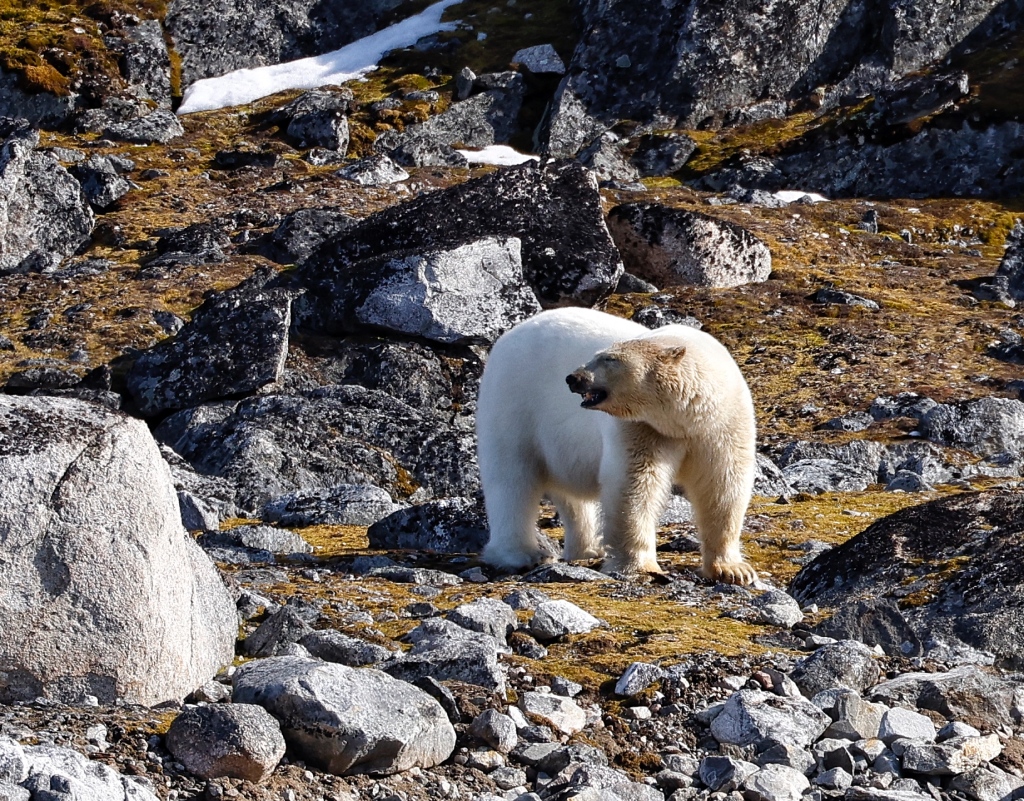Reindeer (or Caribou as they are called in North America) are a unique species finely tuned to the rhythms and demands of the harsh arctic landscape. They have a circumpolar distribution in North America, Europe, and Asia, inhabiting the tundra and woodland, mostly above the Arctic Circle. Some subspecies are migratory, and some move only locally to search for food, but all reindeer/caribou have evolved unique adaptations to utilize the 24-hour daylight of the Arctic summer in order to survive the long, dark Arctic winter.
The first thing you notice about the Svalbard reindeer subspecies is that they are short and stocky. They have small ears, short legs, compact muscular-looking bodies (although it’s hard to tell under all that fur), long noses, variable eyeshine, and big feet! All of these characteristics play an important role in their survival.


Svalbard reindeer have comparatively large heads (for their body) with long noses. The convoluted nasal bones are essential for warming up the frigid air inhaled and recovering the moisture in the exhaled air — i.e., conserving heat and water. Their compact bodies minimize the surface area of potential heat loss to heat-producing body volume, so they conserve as much heat as possible.

All reindeer have big feet with four toes that spread out flat as they walk. In the summer the foot has a spongy pad that helps them walk on soggy tundra. In the winter, the pad dries into a thin, hard layer with sharp edges that is used like a shovel to dig into the snow and uncover vegetation. Hair between and beneath their toes helps give them some friction when walking on ice.
Their fur is composed of a dense undercoat of short hair and a longer overcoat of longer guard hairs that are hollow and transparent making the coat look white. The hollow spaces in the outer guard hair trap heat which makes the reindeer able to withstand temperatures as low as -70 F! Svalbard reindeer shed the outer fur layer in the summer, and you can see the inner, brown fur beginning to show in the photo above.


Another unique characteristic of reindeer is their ability to see in the ultraviolet part of the spectrum. In fact, their eyes undergo a seasonal change in the coating behind the retina (called “tapetum lucidum” or eyeshine). In the summer, the eyeshine of reindeer eyes is orange, but in the winter, the eyeshine is bright blue. Dim winter light (perhaps moonlit) tends toward the blue side of the color spectrum, and thus, reindeer change seasonally in their ability to detect objects in that spectral environment.

For a reindeer that can detect objects in the UV part of the spectrum, objects that reflect UV light, like snow, look bright white and objects that absorb UV light, like wolf fur or lichens on the bark of a tree, look black. Being able to see potential predators at a distance is an obvious survival advantage, and being able to find hidden food in the winter is another. See examples of normal color and UV vision below.




Reindeer are social animals and use their numbers to deter predation. But the heavily glaciated landscape of Svalbard creates an additional challenge for maintaining large numbers of reindeer on such a scanty production of summer vegetation. Thus, reindeer social groups are noticeably smaller on Svalbard and usually consist of a protective male guarding a harem of females.
Another marvel of evolution and adaptation — the amazing Reindeer.



















